Thinking about starting an ecommerce business, but having a hard time deciding which profitable business model you want to use?
Dropshipping is one of the most popular methods out there. Research shows that the global dropshipping market is expected to reach a compound annual growth rate of 28% through 2025.
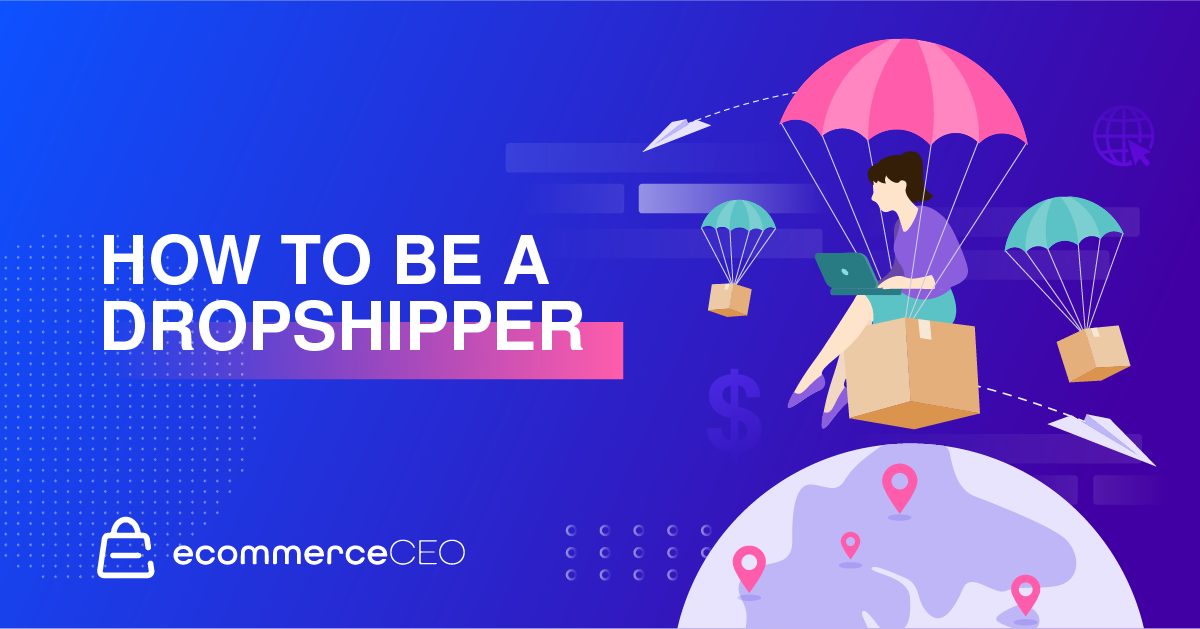
If you want to know more about how to be a dropshipper, you’re in the right place. In this guide, we’ll cover everything from what it is to how the business model works, whether it’s right for you, and how to be successful with it.
Dropshipping is an ecommerce business model that eliminates the need to store inventory and handle shipping. Instead, when a customer places an order on your website or Amazon, a third-party supplier packs and ships the order directly to them.
Is Dropshipping Legal?
Yes, dropshipping is legal. It is important, however, to do your research. Using scammy suppliers can lead to several issues. For example, if you partner with a supplier of unlicensed merchandise, you could end up in trouble with the license holder.
That said, as long as you’re not building a dropshipping business out of reselling products that infringe upon someone else’s copyright, you’re safe.
Is Dropshipping Worth It?
Honestly, the answer depends on your needs and motivations. If you’re looking to start a side hustle, you can build up to a nice income over time, then dropshipping could be worth it for you. If, however, you need to make a lot of money in a short time, you may find dropshipping isn’t worth it.
To be successful with a dropshipping business, you must spend time, money, and effort. You’re in charge of finding products and suppliers, marketing, and customer service. The only aspect of your journey as an entrepreneur that the suppliers handle is the inventory and fulfillment. That means everything related to customer acquisition and retention is on you.
Several things can hinder your business growth, including:
- Long shipping times
- High cost of goods sold (COGS)
- Refunds take a long time
- Low product quality
- Poor customer support
- Seller’s unprofessionalism
Is the Dropshipping Model Right for You?
Ultimately, this depends on the resources you have available. If you don’t have the time or money to invest in finding suppliers and marketing your store, you may need to find another model to work with. Many niches are saturated, which is why taking the time to brainstorm dropshipping business ideas and conduct competitor research is crucial.
How to Become a Dropshipper
Becoming a dropshipper is easy. All you have to do is choose a product or niche, find at least one dropshipping supplier to provide the products, and build your website.
Depending on the state you live in and the products you sell, you may or may not need a business license to get started with dropshipping. When you use an ecommerce platform like Shopify, you’re not required to have a business license. However, investing in one can make you look more legitimate to customers and suppliers. Some dropshipping suppliers won’t work with businesses that do not have a business license.
How to Be Successful in Drop Shipping
Because you don’t need to stock an inventory and handle fulfillment, you can start a dropshipping business with around $500 or less. It’s much more affordable than many other business models.
Create a Drop Shipping Business Plan
A dropshipping business is a business like any other – and to get started on the right foot, craft a business plan.
This means taking to time to think about the product or products you’re going to sell. It’s never a good idea to enter the market with a product you chose because you like it. Often, that approach leads to wasted time and effort because it doesn’t translate to sales and revenue.
We’ll cover more about how to find your niche and products below in our step-by-step breakdown.
Aside from the products you’ll sell, you’ll also want to include information about:
- Market research with a competitor analysis
- Potential suppliers
- Your plan for your website
- A marketing plan to help you bring in customers
Conduct Market Research
Market research validates your ideas. It also ensures you’re not entering a market where it will be next to impossible to compete. The key is to find a product or niche that isn’t so saturated that you’ll be able to make a name for yourself… but something that is high enough in demand that you’ll actually be able to make a sale.
Start Small and Scale
It’s always a good idea to start your dropshipping business with a few products. This way, you can see how well your marketing efforts are working and determine if you need to make adjustments before you continue. You can also use the revenue you earn reinvesting in your business – adding products as desired to help grow your business.
Dropshipping Step by Step for Beginners
1. Understand How Dropshipping Businesses Work
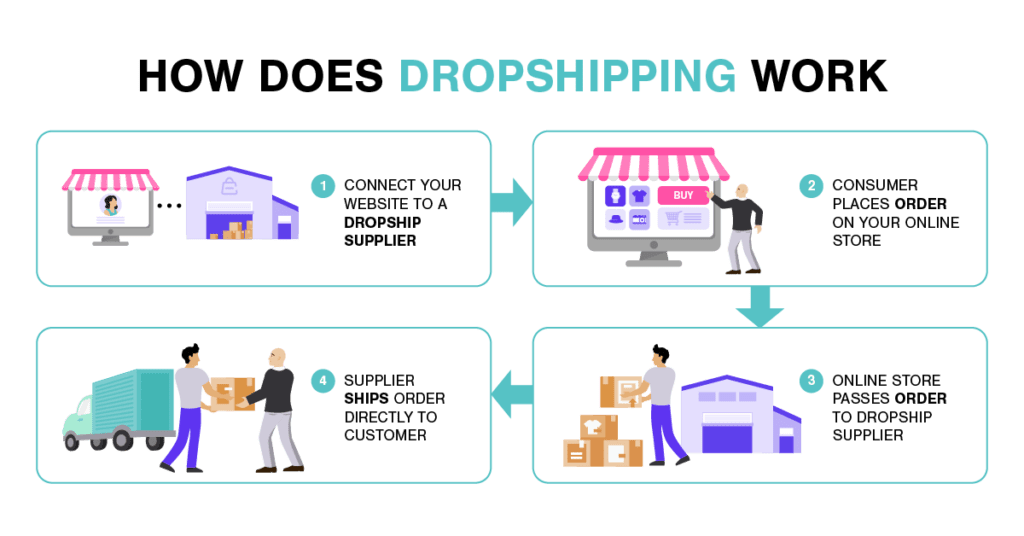
The drop shipping model has three key players:
- You – the online retailer
- The customer
- The supplier or manufacturer
You determine the products you want to sell, find dropship suppliers that provide those products, and build a website. You list the products for sale on your ecommerce website and market the site to your target customers.
Whenever a customer buys a product, your dropship supplier receives the order, and then sends the product to the customer on your behalf. Many suppliers offer customized branding so that your business name and return address are on the packaging. The packages are sent in unbranded boxes so your customers don’t even realize a third party is involved.
You make money every time you sell a product because you keep the difference between your selling price and the wholesale price. For instance, if you run a print-on-demand dropshipping business and pay the supplier $11 for a t-shirt and shipping costs, then sell it for $25, you earn a profit of $14 per shirt.
We’re not lawyers, accountants, or tax experts, so it’ll be up to you to research what’s required in your state and local area. However, if you want to use a business name other than your own, you’ll have to register your business name and a “Doing Business As” or DBA.
Depending on the business structure you choose, you may need to hire a lawyer to help you file the paperwork with your state government.
You’ll also need to acquire an employer identification number (EIN) with the IRS for tax purposes in the United States.
Depending on where you do business (not just the location where your business is based) and what you’re selling, you may also need a business license, along with permits from your state, county, and local governments.
You may need a seller’s permit if you sell products that can be taxed. Some states may also require a sales tax license. And in some areas, you may need a home-based business license if you’ll be starting a dropshipping business out of your home.
2. Find a Good Dropshipping Niche
Here’s where the fun part starts. With the dropshipping business model, you and your competition all have access to the same products. Many of you will work with the same suppliers. Even if you have different suppliers, many of them offer the same service levels. That means to differentiate your business from the competition, your marketing efforts are the critical difference.
For your marketing efforts to be successful, you must find a target market and sell a product or products that speak to them – often solving a problem for them.
Start with What You Know
Think about the things you know and like as a starting point. It’s always easier to sell something you know about. However, just because you’re interested in something doesn’t mean others will be, too – so make sure you have a few ideas on hand to work with. This way, if you find that your main idea isn’t likely to be the hit you thought it was, you can test something else.
Find a Specific Target Audience
The idea that the larger the market is, the more potential you have can be misleading. The bigger the market is, the more businesses you’ll be competing with. And if you’re up against a huge business that’s been around for many years, it will be hard to convince people to come to you, as a brand new unknown player.
As you start a dropshipping business, it’s better to focus on a smaller section of a market that you can customize to meet their needs. For instance, you could market to parents of children with cerebral palsy, or to tattoo artists. What matters is that you try to find a market and product that’s already interesting to you.
Conduct Keyword Research
To help you identify your niche or validate your idea on what could be a worthy niche, do keyword research. You can use Google Trends, Google AdWords, or other keyword tools to find out if there’s any search volume around the particular products you want to sell. The higher the search volume, the greater the demand for the product.
Look at What’s Selling Online
Another way to find the top trending products right now is to look at various lists online already. You can check marketplaces like Amazon and eBay for their best-selling items.
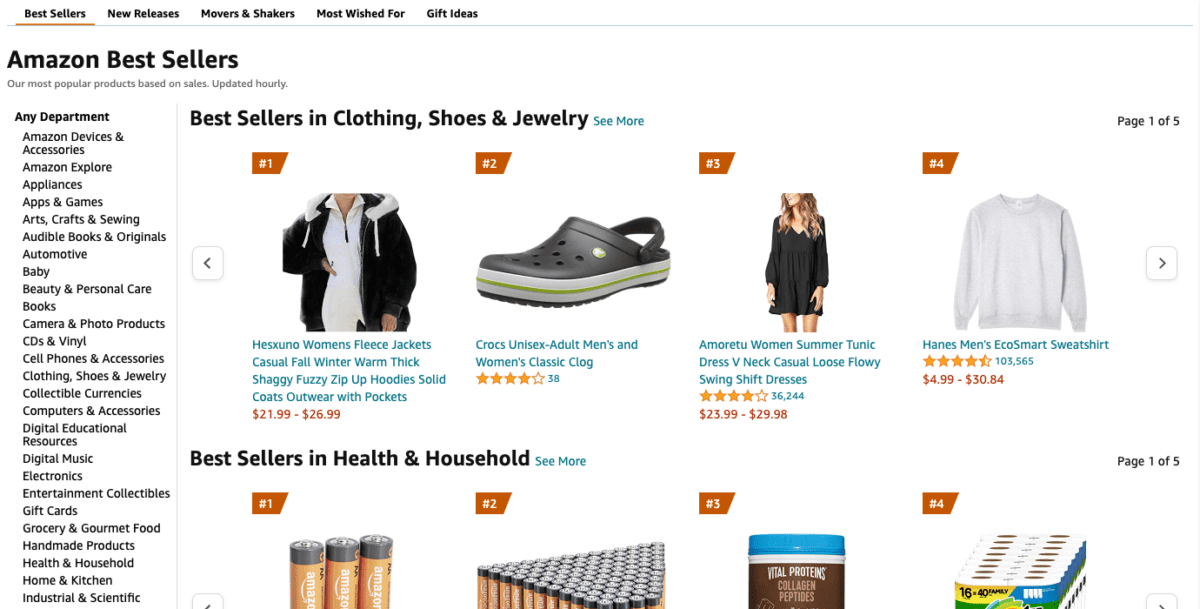
You can also refer to keyword research you’ve conducted in the previous step to determine if something is popular or not.
Watch Social Media Engagement Trends
Research your niche on various social media platforms. Start with the platforms that are most popular with your target audience. Pay close attention to patterns in the things that get the most engagement.
You can also use social listening tools to search a particular niche to see what’s popular and engaging right now. These tools make it easier for you to align your messaging with their behavior and language, to create a truly personalized approach while you build your brand.

Research Your Competition
After you’ve settled on a prospective niche to break into, turn to Google, Amazon, eBay, etc. to see what the competition looks like. After all, chances are that many of them are selling the same products you’ll be selling.
You want some competition because that shows buyer demand. But too much competition, and you won’t be able to stand out in the sea of noise.
Determine Profitability
You should know your market and product… but that doesn’t mean you’re ready to sell yet. You need to make sure your idea is profitable before you devote all your resources to making it a reality.
Dropshipping margins are low, so you have to be sure you can actually make some money. SaleHoo recommends selling non-seasonal products that you don’t see major brands dominating. It shouldn’t be expensive to ship and ideally sells for at least $15. Many high-ticket items fit these criteria, too.
Don’t be discouraged if you spend a lot of time on this step. It will be time-consuming, especially if you have to go through the process multiple times because you find a market that’s too niche, or too saturated. Or you find a product that doesn’t have the profitability you need. But it’s getting this step right that sets the tone for the rest of your dropshipping business, so it’s important not to get so excited you skip ahead.
3. Find Quality Dropshipping Suppliers
It’s time to find suppliers who can provide you with the product you want to start dropshipping. Finding where to source your products will take time, but shouldn’t be quite as time-consuming as finding a niche. Not sure where to get started? Check out this list of the best dropshipping companies for every niche.
Okay, so, with a list of products in hand, what’s next? How can you be sure the supplier you’re thinking about is the best one for your business? What needs to be a priority when evaluating a supplier? After all, your supplier is a critical business partner. Here’s what to look for:
Expertise and Experience
We understand that every business has to start somewhere, but for dropshipping, you need suppliers that have a track record of providing quality products and customer service. Before contacting any supplier, look them up on the Better Business Bureau (BBB) and other authoritative review sites like Trustpilot. If you notice they’re not well rated on those platforms, remove them from your shortlist.
Charges, Fees, and Shipping Costs
Charges and fees are a major source of revenue for some businesses. In the dropshipping business, high shipping costs can spell doom. Larger, heavier items cost more to ship. To reduce costs and maximize your profit margin, aim to spend less than $5 per item on stocking, packing, and shipping. Be aware that some suppliers may also charge a small monthly fee for working with them.
Quick Shipping Times
Unless you’re dealing with overseas suppliers, the general expectation is that your product will make it to the end customer within a week or two. Longer than that? Your customers are likely to be upset.
Product Sample Availability
Without samples to look at beforehand, you risk selling poor-quality products. When your customers realize they bought something that’s going to break or otherwise not work the way it was advertised or intended, you’ll earn a poor reputation.
Before signing any kind of supplier contract, ask for samples of the dropshipping products you want to sell. Test them out yourself beforehand so that you know exactly what your customers are getting.
Ordering samples also lets you experience the shipping process from the customer’s point of view.
References/Referrals
Reputable dropshipping suppliers will give you referrals to other businesses they’ve worked with if you request them. If the supplier won’t provide that information, that’s a sign to avoid them.
Ways to Find Dropshipping Suppliers
Need help finding dropshipping suppliers? We’ve got a list of the best dropshipping companies for every niche to help you get started.
You can use drop shipping marketplaces like AliExpress, Doba, Wholsale2B, and Dropship Direct to help you find suppliers, too. These marketplaces list sellers across a variety of niches, but don’t necessarily take care of your due diligence for you. This guide on AliExpress dropshipping may come in handy.
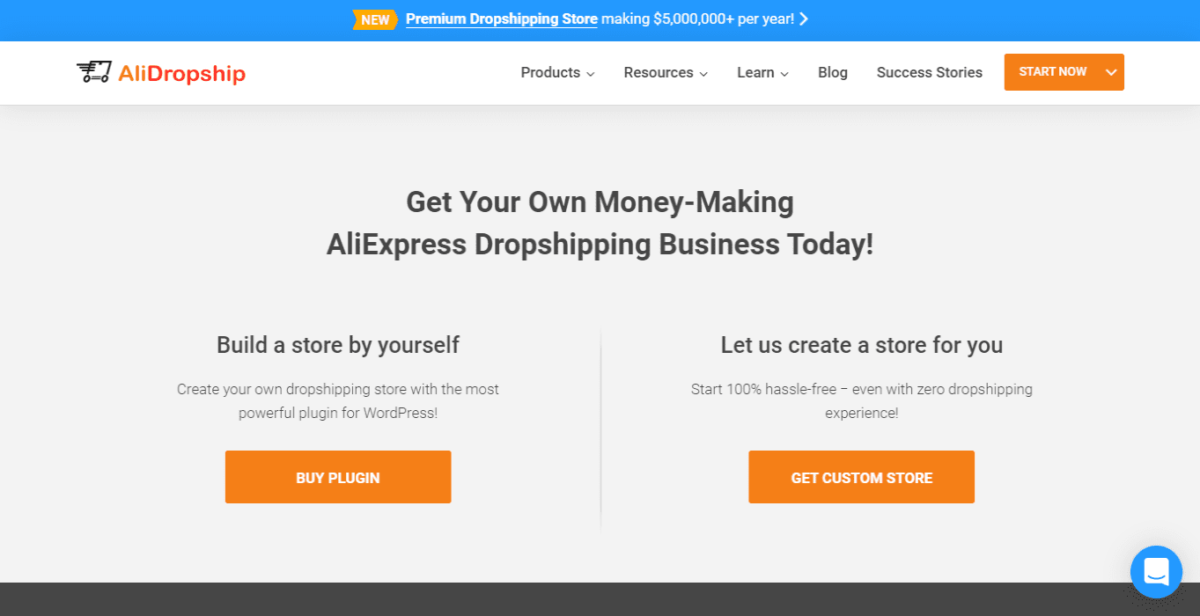
When you find a supplier or wholesaler through one of those marketplaces, take the time to conduct your own research about them before contacting them. The right dropshipping supplier does more than offer the products you’re looking to sell. They should also be a reliable business partner.
Outside of dropshipping marketplaces, you can also reach out directly to importers and manufacturers. This approach takes more time and effort, but the payoff is usually worth it. You end up with higher profit margins because you remove the middleman and purchase wholesale directly from the manufacturer.
There are a couple of caveats with this approach:
- Most manufacturers have minimum order volumes. For a beginner, minimum order volumes aren’t a workable approach. Sometimes, you can work out a deal with the manufacturer, but that’s hard to do as a brand new business. It could end up costing you more money up front and is more of a risk if you don’t have any previous sales data to guide you.
- You may not be able to integrate your ecommerce platform. Dropshipping marketplaces are much more likely to easily connect to your own online store, making it easier to automate the order fulfillment process. Without integration, it’s a lot more work for you to add and manage the inventory.
For most people, it makes sense to wait until you’ve got some experience in dropshipping before working directly with manufacturers to source your products.
4. Build Your Ecommerce Website
You can’t have a dropshipping business without an online store. With so many ecommerce platforms on the market today, choosing the one to build your store with is another major factor.
Which should you choose? How should you choose it? Ask yourself these questions. The answers will help point you toward the right platform for your needs.
How comfortable are you with technology?
Many of today’s website platforms are geared toward people with little to no technical knowledge or experience. You can effectively build a professional quality website with no coding skill required. That said, you trade a lot of control over smaller details since the platform takes care of things for you.
Can you afford to hire experts to help you? What’s your budget?
Let’s say you opt for a platform that gives you more control over things, but you need help to customize something. Do you have the budget to hire a freelancer or an agency to assist you? If not, you will need to switch gears to something you can make work on your own.
If you’ve got a limited budget, you may find yourself with limited options. Free options like WordPress still require you to invest in your domain name and hosting.
Shopify is a top choice for a dropshipping ecommerce store because it’s easy to use. Affordably priced, and easily integrated with a variety of drop shippers, Shopify users can get their small business website up and running within a matter of a few hours. There’s a 14-day free trial available to help you decide if you want to pay for continued use.
How much control do you want?
For the entrepreneur who wants more control over the technology powering their online business, an alternative like WooCommerce may be the way to go. It’s a WordPress plugin that’s free to use.
This approach not only gives you control over the design but also over the software itself. You’ll choose the web hosting, which puts you in more control over the site speed and other elements you can’t really influence with a platform like Shopify.
If it’s easier for you to pay a monthly fee to have all of that taken care of for you, then opting for a hosted option like Shopify or BigCommerce may be the better option.
How many products are you selling?
Some hosted ecommerce platforms place limits on the number of products you can list for sale in your store. You may have to pay for a higher tier plan to get access to the number of products you need or to unlock the ability to offer unlimited products.
If you have a large inventory or product range, you’ll need an ecommerce platform that’s capable of handling the volume. You’ll also want to avoid platforms with fee structures based on the product volume.
When you first start a dropshipping business, you may not have many products at all, and that’s okay. That may point you toward a more basic ecommerce platform, and that’s okay, too. However, if you plan on adding more products than something can handle, you may find that you need to change platforms.
Planning reduces the need to migrate from one platform to another. It’s a costly hassle that may mean inconveniencing customers and losing money while you transition from one to another.
Is it SEO-friendly?
Search engine optimization, or SEO, is an important part of marketing any online business. A lot of business owners underestimate the influence it has on customer acquisition. Potential customers are online searching for the products you’re selling, but if you’re not in the search results, they won’t come to you. They’ll go to your competition instead.
SEO-friendly features include things like:
- An integrated blog
- Product reviews
- The ability to use your own domain
- Customizable URLs
- Independent headings
- Independent ALT tags
- 301 redirects
Does it offer the apps, plugins, or integrations you need?
Apps or plugins and integrations make it possible to extend the features and functionality of your website. If you use a dropshipping marketplace like Spocket, or a print-on-demand company like Printful, to fulfill customers’ orders, then you need to make sure your chosen ecommerce platform integrates with it.
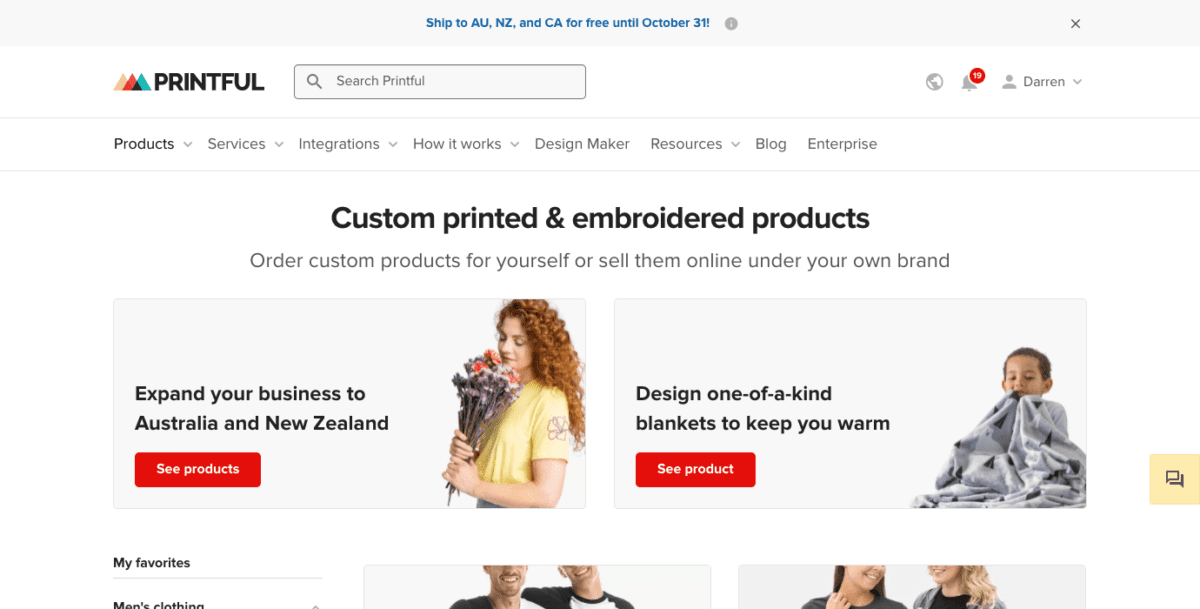
Failure to have an app or integration means it will be harder to make sure orders are sent to the dropship supplier after your customer checks out on your website. There’s a lot of room for mistakes, which could cause issues with customer satisfaction.
If your platform has an integration, you connect your website to your account. From there, whenever a customer places an order on your website, it will automatically be transferred to the provider for fulfillment. It makes inventory and order management much simpler.
What kind of marketing features are built-in?
Building your site is only the beginning. If you don’t build up a steady customer base, you won’t get any sales, and without sales, you won’t have revenue. You can have the best products on the market today, but if people don’t know about them, it won’t make a difference.
What kind of marketing features should you look for?
- Coupon codes and discounts
- Support for gift cards
- Abandoned cart recovery
- Support for customer loyalty programs
- Newsletter and email marketing integration
- Social media support
Even if you find something with all the features you need, it’s crucial to make sure the features work the way you expect. If there’s support for coupon codes, can a customer use them more than once? Can you control the number of times it can be used overall? Does the newsletter support customer segmentation so you can send different content to those who’ve purchased in the past month compared to those who’ve abandoned their carts?
If these features aren’t automatically included as part of your plan, can you get them if you pay extra for apps? Is paying extra for those apps within your budget? Or are you better off choosing a platform at a price point with those features already included?
Choosing the right ecommerce platform is only part of the battle. You’ll need to create content and get dropshipping products loaded up for sale.
5. Market Your Products On the Internet
After your website is ready to go, it’s time to bring in customers. In your dropshipping business plan, you should have at least some basic ideas for how you’ll market your business. These ideas are meant to guide you through getting started.
To stand out from your competition, focus on building a brand. Think about things like your logo and color scheme. If you can’t afford to hire a graphic designer, use free tools like Canva or Crello to help you. Creating a brand guide will help when you create content for social media and advertising campaigns.
Social Media (Facebook, Instagram, TikTok)
Social media platforms are great for reaching your target audience. To be successful and make the most of your time, focus on creating a solid presence on the top two platforms where your customers are most likely to be found. Trying to be everywhere at once makes it harder to foster genuine connections with your followers.

Do some research to find out where your customers spend most of their time. What age group are you aiming to reach? The majority of Facebook users are male (57%) and most users fall between the ages of 18-54. Only a small percentage of users make up the 13-17, 55-64, and 65+ demographics.
TikTok, on the other hand, has a 60% female audience, with 80% of the users falling between the ages of 16-34. If you’re trying to reach young women, TikTok is definitely worth considering.
Whatever networks you choose to invest in, take time to ensure that your social media profiles are optimized to the fullest extent possible. This means making sure you, at a minimum, have:
- Your logo as your profile photo
- Profile cover graphics, where applicable
- A bio with business information, including your website link
Invest time in creating a social media content calendar. This outlines what you’ll post and when. Create content ahead of time and schedule it to post according to your calendar so that your audience always has fresh content from your brand.
It’s up to you to determine how often you should post and the content that works. If you didn’t look at social media profiles when you conducted competitive research, now’s the time to do it. Note the kinds of content they post, when they post, and the engagement they get. Don’t copy them exactly, but mimic what they’re doing well, and experiment with other things.
Social media isn’t the place to constantly promote your own brand and its products. If you’re nothing but a constant sales pitch, you’ll quickly fade into the noise of the internet. You’ll be ignored and risk losing your followers.
When you’re first starting a dropshipping business, it’s hard to build a following. That’s where paid advertising can be quite helpful. Facebook Ads can help you accomplish a lot, including:
- Increasing the number of followers/fans
- Give followers an exclusive offer
- Send people to your website
- Target people who’ve visited certain pages on your website
- Target your email subscribers
In addition, influencer marketing can be a helpful resource. Pay influencers in your niche, so they can showcase your product to their loyal followers.
Each social media platform has its own ads platform you can use to advertise your business.
Search Engine Optimization (SEO)
SEO is the process of creating content optimized for search engines. By producing content around certain keywords your audience will likely search for, you can rank higher in the search results. When you rank well for the keywords that bring your target audience to your website, you can build a steady stream of new customers. It’s not an overnight thing – effective SEO takes time. It could take six months before you see real gains.
That said, SEO is about more than sticking keywords in the content all over your website. As Google becomes more sophisticated and seeks to provide a better user experience for searchers, they rank sites based on multiple factors, including:
Domain Age and Authority
The older your domain is, the better your ranking will be. Though domain age doesn’t have a major impact, it makes a difference. Data from Ahrefs shows that nearly 6 of the top 10 results in Google are from sites that are at least three years old.
Don’t let that stop you from building a quality site, though. The bottom line is that everyone has to start somewhere.
How can you get authority even if you’re a young site? Focus on creating quality content that people can use. If you fill your site with spammy, keyword-stuffed content, you’ll never be able to rank above sites that focus on providing value to readers.
Website Security and Accessibility
You need a website that Google’s bots can reach and crawl. If they can’t crawl it, it’ll never rank. In ecommerce, you need SSL (the technology that creates an HTTPS site) to make your site secure enough to transfer financial information. If you use a hosted solution, the security is taken care of for you.
Links
The whole internet is connected by links – so it’s no surprise they matter when it comes to SEO. Your site needs inbound links (links to it from other websites, outbound links (links from your site to other relevant resources), and internal links (links to other relevant pages and blog posts within your own site) to help users and Google.
User Experience
User Experience makes a big difference in how much traffic your website gets. Google uses artificial intelligence to better rank websites based on signals they get from how users are interacting with the content on a page. These signals include, but aren’t limited to:
- Click-through rate (CTR): The percent of visitors who click through to visit a website after it shows up in search results
- Bounce rate: The number of people who visit your page and quickly go back to the search results. Google assumes they do this because they did not find what they were looking for on your site. If enough people do this regularly, Google may adjust your rankings because they don’t see your site as relevant to that keyword. If you’re writing to the keyword, but the content still has a high bounce rate, it likely doesn’t match the searcher’s intent and needs a bit of reworking.
- Dwell time: How long visitors stay on your website after they visit.
Mobile-Friendliness
More people are using mobile devices than desktops to connect to the internet. Because of this, Google focuses its efforts on ensuring that mobile users get a great experience. A few years ago, Google switched to a mobile-first index, so mobile versions of a website are served first. If your website isn’t built for smartphones and tablets, your rankings will suffer.
The easiest way to ensure your website is mobile-friendly is to make sure you’re using a responsive website design. The design will automatically adjust the elements on your site to fit the visitor’s screen.
PageSpeed
How fast your pages load is a critical part of the user experience. If your pages take too long to load, users will grow impatient and leave. When this happens too often, Google will negatively adjust your ranking.
Technical SEO
Technical SEO is about getting the coding elements right to optimize your website. But you don’t have to be a developer to master it. Technical SEO also involves:
- Keywords in page titles
- Header tags where appropriate to break up the content and make it more readable
- Meta descriptions
- Keyword phrases in image ALT tags
- Using schema to tell Google more about the content you’re producing
Pay Per Click (PPC) Ads
When you run a Facebook Ads campaign, you’re using PPC ads. That’s how most social media advertising works. But as you’re ramping up your SEO efforts, you can also use PPC ads to reach people on Google.
Depending on the keyword you’re trying to show up in the search results for, you may pay a higher cost per click. Keywords with commercial intent cost more than those with informational intent.
If you’re not experienced in running PPC ads, it’s easy to spend a lot of money on a poor return on investment. It’s a good idea to hire an expert to help you. If that’s not in your budget, do some research to help you learn about the options, and start small.
Email Marketing
Email marketing is an essential part of many online businesses – not just ecommerce. It’s a great way to connect with potential and existing customers to notify them of any new products, sales, or discounts you may have. But more than that, it’s about engagement with your prospects.
For ecommerce email marketing, there are a few types of emails to work into your sequences:
- Welcome email: This one is what someone receives upon joining your list and confirming the opt-in. It’s crucial to make a good first impression here, so subscribers are more likely to open your emails again in the future.
- Curated email: This email curates a collection of your best assets – whether it’s a collection of the best blog content you’ve posted over the last month, or promoting your best-selling products. When you curate the best of what you offer, subscribers can choose what they want to learn more about. Ultimately, this puts you in more control of your marketing efforts because you can segment your recipients based on their interests.
- Engagement emails: Most people get a lot of emails every day. If you want to get your subscribers’ attention, you need more than a good subject line. Encourage engagement by offering free shipping, exclusive discounts only available to subscribers, etc. However you do it, give people a reason to engage and make it a memorable experience.
- Discount emails: Noticing a lot of abandoned carts lately? An effective way to win back those customers is to send a discount email. Offering a discount is an excellent way to get people to finish the checkout process. However, discount emails require balance. If you send them out too often, people will wait until they can get a discount code to make their purchase. You’ll lose profit. But, if you’re stingy with the discounts, you could send your customers to the competition.
- Cart abandonment sequence: It’s more common than you think – with the fast pace of today’s world, you could shop for something online, then get distracted by the door, a phone call, or someone in your home needing your attention. Before you know it, days have passed, and you get an email about things you’d left in your cart. Those emails are crucial to capturing the sale from people who walk away before finishing the checkout process. They won’t work on everyone all the time, but a good cart abandonment sequence can make a lot of difference to your bottom line.
- Order confirmation emails: You should always send order confirmation and tracking emails so customers can keep up with what they purchased from you and when they can expect to receive it.
- Upsell emails: It’s no secret that repeat customers make you more money in the long run. Upsell emails aim to sell additional products to existing customers. After receiving an order, some brands will email new customers with some recommended items. Depending on your dropshipping niche, however, cress-selling may not be an option. If this is the case, then you may use tiered pricing.
- Referral emails: To grow your leads with little effort, encourage your subscribers to refer their friends and family to your company. Offer a discount for reach person they refer who becomes a customer. At the least, send them a thank you email for every successful referral.
- Win-back emails: Eventually, you’ll run into some subscribers who used to be really active, that stop reading your emails. Those people stay on your list (which costs you money) but don’t read or engage with your emails. That’s where the win-back email comes in – it’s a chance to get those people back, or remove them from your list. You can send them a discount to bring them back and see what happens. Sometimes it works, sometimes it doesn’t. But at least you know you tried.
- Survey/Feedback emails: Wouldn’t it be cool if you were a mind-reader and could always give your subscribers what they want? That would make things easier, but until we get mind-reading powers, the survey/feedback email is the next best thing. Occasionally, send emails to your list and ask them to share their thoughts with you. You can do this with a survey or just a quick message asking for feedback. Use the information you get from your subscribers to make adjustments where you see fit. To increase participation, offer the chance to win a gift card, or provide a discount upon completion.
- Thank you emails: Showing your appreciation is important. Of course, thank your subscribers for signing up for your list and making purchases. More than that, though, take the time to thank them for being who they are – because, without them, you wouldn’t be in business.
6. Track Orders and Manage Inventory
Since dropshipping means you won’t have inventory on hand to keep track of that makes operations easier. But you’ll still need to keep track of the supplier’s inventory and make sure it syncs to your store correctly. Typically, this is done with a product data feed that could come in many forms. It’s easiest to consider it a spreadsheet with the information you need to work with your supplier.
When you choose a supplier (or suppliers) to work with, ask for their product feed. It should at least include:
- A product identifier such as SKU, UPC, or MPN
- Quantities
- Your costs
Be sure to find out how often the supplier updates their product data feed, and how you’ll receive those updates. The most tech-savvy suppliers provide this information online with hourly updates, but some may opt to send you an email every day.
Many businesses prefer to work with suppliers that provide more than the bare minimum of information in their product data feeds. Larger and more experienced suppliers tend to also include:
- Product titles
- Product descriptions
- Product categories
- Product images
You’ll still need order tracking in place so you’ll be able to provide customer service to the people who place orders with you. Generally, you’ll have some kind of portal with the supplier that makes it easy for you to track the orders and supply the tracking information to your customers when an order ships.
Automate Fulfillment Process
Your ecommerce platform should make it fairly simple to automate the fulfillment process. If you use Shopify, for instance, your dropshipper may have an app that you can add to your store. This ensures that once a customer places an order through your store, the supplier automatically gets the order so it can go to fulfillment.
If you can’t automate this process, it will make operations more difficult. In the beginning, it may be easy to manually send your dropshipping store orders to the supplier yourself. But as you grow and your order volume increases, manually submitting orders takes time. And, the more you do, the more room for error there is.
7. Provide Customer Service
Since your end customer won’t know the dropshipper was ever involved, all customer service efforts are your responsibility. In the beginning, this may be as easy as setting up a dedicated support email address. As you grow, however, it may be unrealistic to handle everything yourself via email.
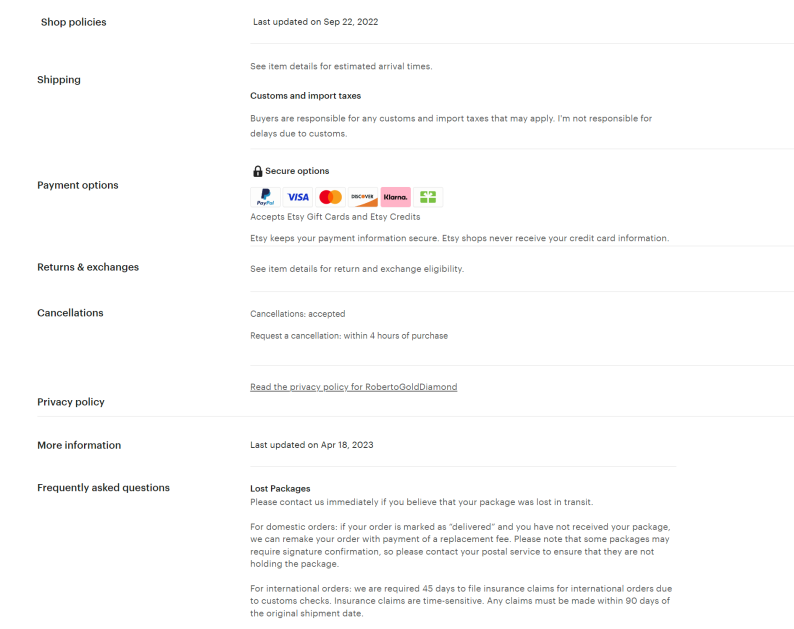
However, research shows most of today’s consumers prefer self-service options for customer service. This means making sure your website has features like:
Include Frequently Asked Questions (FAQs)
Include a FAQs page on your website. Link to it in your site’s main navigation. This can help customers find answers to their most common questions before they order and help them address issues while they’re waiting on their order. It can also be helpful if a customer runs into an issue after they receive their order.
Live Chat and Chatbots
For more complex or urgent issues, live chat is helpful. It gives people a way to contact customer service live, without having to get on the phone. You don’t have to have someone available 24/7, but you can use chatbots to help pick up the slack.
Chatbots are pre-programmed to converse with users based on certain keywords and phrases the user may enter. For instance, if a person asks about returns, the chatbot could direct them to the help article on processing returns, or ask for the order number, then generate a return label.
Clear Shipping Policies
Your website needs to have a shipping policy. Your shipping policy must include:
- Shipping costs
- Shipping methods
- Shipping timeframes
- Any shipping restrictions
- International shipping information
- What to do if a customer has a lost or missing package
- Return and exchange information
Update your shipping policy regularly; a good rule of thumb is every six months. Update your policy every time to change your shipping methods. If you change suppliers, this could affect your shipping methods and timelines. Update the policy to reflect those changes.
Clear Return Policies
As much as you’d like to have packages arrive at your customer’s home or business and stay there – it won’t be the case for 100% of your customer orders. Sometimes, the customer returns the product because it’s not what they expected it to be. Sometimes, the package doesn’t contain the right product. And sometimes, the product is damaged during shipping.
No matter what the reason, your dropshipping business should have a clear return policy displayed on the website. Here are a few things to consider as you develop your return policy:
- What’s the supplier’s return policy? Are you stuck with something if a customer returns it to you?
- Can you afford to provide customers with free return shipping?
- How long will it take to process the return and refund?
- How long is your return window? Will you extend it for the holidays?
- Does the return have to be in its original packaging?
Your return policy must clearly outline the terms and conditions under which you’ll accept returns from shoppers. Include the length of time a customer has to return the product. Include return instructions, along with a return address. If you’ll provide return shipping labels, make it clear where customers can go to get those.
Have a plan in place for how you’ll scale support efforts as your online business grows. This could include things like hiring a virtual assistant to handle customer service emails, or investing in a platform that makes it easy for customers to create support tickets.
Handling Returns
Since the dropshipper includes your return address on products, chances are customer returns will come to you. That could cause a lot of trouble for you if you don’t have a good place to store the products or a plan for getting your money back out of them.
That’s why some drop shippers offer refunds without returns. If you want to make sure you’re providing quality customer service, but don’t want to deal with the hassle of returns, you can ask your customer if they want a brand new product instead of a refund. You can also let them know they can keep the existing product, too.
If they accept that resolution, they’ll be happy with the extra product you send them, and if you have big enough margins, you may still have a net positive from the customer.
This approach works best when a customer receives a damaged product. Ask for photos to validate the request before agreeing to send a new product.
FAQs
Get Started with Dropshipping Today
There’s our dropshipping step-by-step guide – in a nutshell. Starting a dropshipping business isn’t for the faint of heart. Like any new business, it takes consistent time and effort. You’ll spend a lot of time, in the beginning, getting things set up for success.
If a dropshipping business seems like a dream come true for you, use this guide to help.
Have you started a dropshipping business before? Are you currently operating one now? Share any tips or tricks we’ve missed in the comments.










